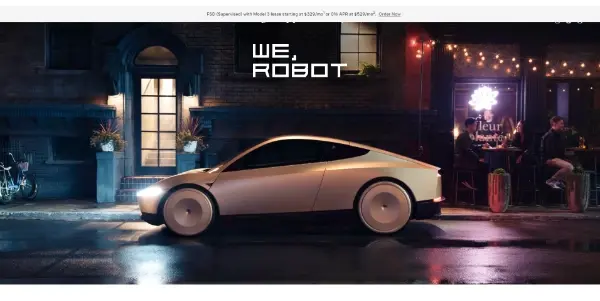Tesla Robotaxi

A range of autonomous, futuristic Robotaxi vehicles (without steering wheel or pedals). Enjoy safe, affordable transportation thanks to Tesla's artificial intelligence
Tesla Robotaxi: The Future of Autonomous Transportation
Tesla's Robotaxi represents a significant leap forward in autonomous vehicle technology, promising a future of safe, affordable, and convenient transportation without human drivers. This article delves into the capabilities, features, applications, and market positioning of this groundbreaking AI-powered system.
What Tesla Robotaxi Does
The Tesla Robotaxi is a range of fully autonomous vehicles designed to provide on-demand transportation services. Unlike traditional vehicles, Robotaxis lack steering wheels and pedals, relying entirely on Tesla's advanced AI system for navigation, obstacle avoidance, and passenger transport. The AI processes data from a suite of sensors, including cameras, radar, and ultrasonic sensors, to create a real-time 3D map of its surroundings and make driving decisions. This allows the vehicle to navigate complex traffic situations, handle unexpected obstacles, and safely transport passengers to their destinations.
Main Features and Benefits
- Full Autonomy: The defining feature is its complete lack of human control during operation. This eliminates the human error factor, a major contributor to road accidents.
- Enhanced Safety: The AI system is constantly analyzing its environment, allowing for faster reaction times and improved safety compared to human drivers. This includes features like automatic emergency braking and lane keeping assist.
- Increased Efficiency: Optimized routes and consistent driving style contribute to improved fuel efficiency and reduced wear and tear on the vehicle.
- Accessibility: Robotaxis aim to improve accessibility for individuals who cannot drive themselves, including the elderly and people with disabilities.
- Affordability (Projected): While the initial investment in the technology is substantial, the scalability and efficiency of Robotaxis are expected to eventually lead to lower transportation costs for consumers compared to traditional taxi services or personal vehicle ownership.
- Scalability: The system is designed to be integrated into a large-scale network, allowing for efficient dispatch and optimized resource allocation.
Use Cases and Applications
The applications for Tesla Robotaxi are vast and extend beyond simple point-to-point transportation:
- On-demand Ridesharing: The most immediate application is providing a convenient and affordable alternative to traditional ride-hailing services like Uber and Lyft.
- Autonomous Delivery Services: Robotaxis can be used for the delivery of goods, enhancing efficiency and reducing delivery times.
- Public Transportation Enhancement: Integration with existing public transportation systems can improve connectivity and accessibility.
- Airport Transfers: Automated transfers from airports to various locations, improving convenience and reducing wait times.
- Last-Mile Delivery: Addressing the challenges of the last mile in delivery logistics.
Comparison to Similar Tools
Tesla Robotaxi competes with other autonomous vehicle initiatives from companies like Waymo, Cruise, and Argo AI. A key differentiator for Tesla is its vertical integration – Tesla designs and manufactures its own vehicles, software, and AI systems, allowing for tighter control and faster iteration. However, the competition is fierce, and the success of Tesla Robotaxi will depend on its ability to deliver a safe, reliable, and scalable solution. Direct price comparisons are difficult at this stage, as many competitors operate on different business models.
Pricing Information
Tesla has not yet publicly released definitive pricing for its Robotaxi service. The cost will likely depend on factors such as distance, time of day, and demand. It's anticipated that the service will operate on a per-ride basis, potentially offering subscription models for frequent users. The overall pricing strategy will play a significant role in the market adoption of the technology. Further details are expected as the service nears commercial launch.
Conclusion
Tesla Robotaxi represents a bold vision for the future of transportation. While challenges remain in terms of safety, regulation, and public acceptance, the potential benefits are undeniable. The success of this technology will reshape urban landscapes and redefine how people move around their cities and beyond. As the technology matures and becomes more widely available, the impact on transportation, logistics, and everyday life will be profound.